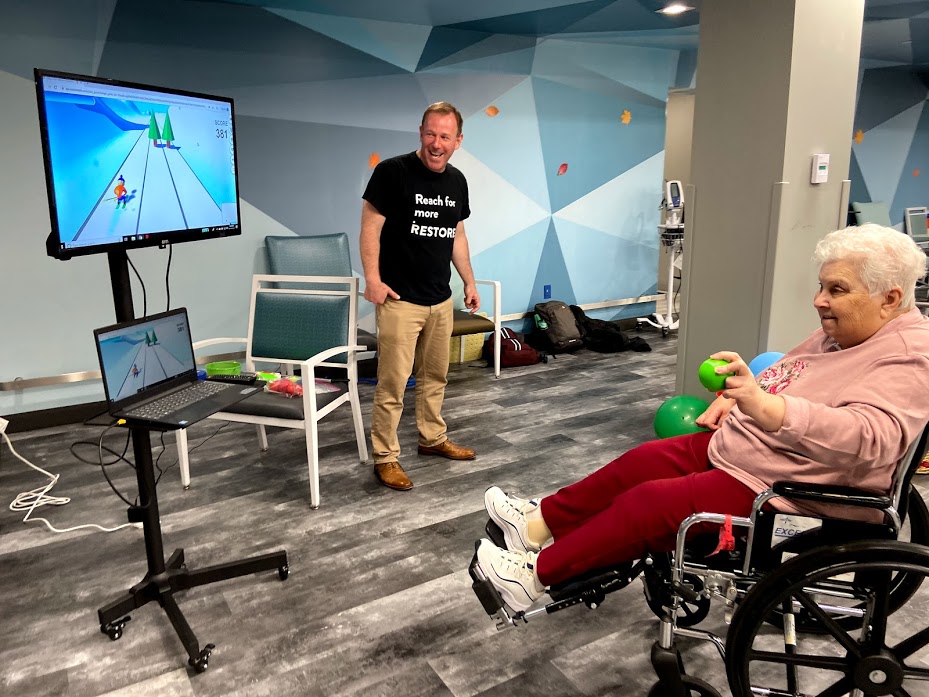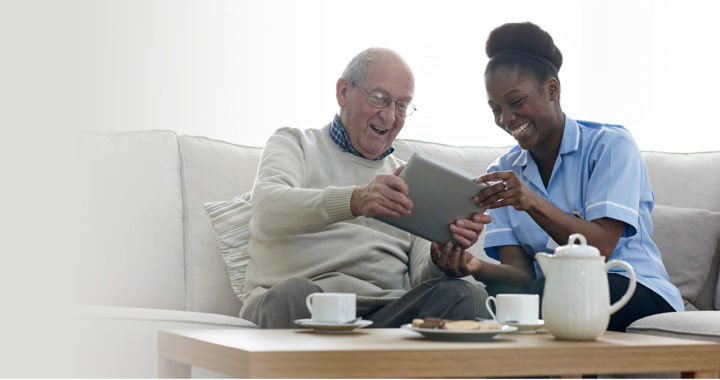And why you'll be left behind if you don’t
COVID-19 presents an opportunity for skilled nursing facilities to adopt new technology.
After 25 years working on the therapy provider side as an occupational therapist, clinical specialist, and multiple senior operations roles, I moved in 2019 to become co-founder and chief clinical officer at RESTORE Skills. I have seen for myself the power of creativity and innovation to get better results in therapy, and I recognize the tremendous impact gaming software could bring to the 2.4 million seniors living in long term care facilities.
RESTORE is an interactive software product for adult rehabilitation patients that uses any webcam-equipped, Wi-Fi-enabled device as a therapy tool in the gym, at the bedside, or home post-discharge. The virtual gamification tool ensures skill-building can happen anywhere, and any loved ones can join therapy sessions virtually. It's the kind of technology SNFs can adopt to change the state of therapy now during COVID and beyond.
I joined the RESTORE Skills team because I saw the delight in the eyes of patients and recognized the potential breakthrough this software could make. What I didn't see coming was the unintentional resistance to technology adoption in healthcare that I encountered once I began working on the therapy technology provider side.

Facility owners and therapy leaders experience our software and agree it serves patients better than reaching for cones, manipulating clothespins, or repeating the same motion to increase shoulder strength and ROM. What they struggle with is getting busy therapists to change the way they are used to working.
But, COVID-19 is forcing facilities to change or risk being left behind. Therapists, accustomed to using therapy gym equipment and keeping patients engaged with interactive group therapy, are now having to find ways to bring therapy into every patient room without sharing equipment. COVID-19 has forced all therapists and facilities to adapt and get creative.
I've come to realize that technology is innovating faster than ever to solve problems created by those who resist technology. It's time to become an active part of this innovation and evolve with technology or risk that components of your job or maybe even all functions of your job being replaced by smart learning.
Facilities risk being outpaced by competitors that gain a reputation for customer satisfaction, innovation, and better outcomes.
In every industry, there will be those businesses that confront the challenges of this global pandemic, and instead of just struggling through, use this new normal as a springboard to take action. These will be the businesses that come out on top.
Champions are key to successful technology adoption
On the provider side, I always looked for innovative technologies that could both accelerate and elevate clinical outcomes, improve customer experience, reduce costs, and simplify work for our teams. Some tools were more successful than others, but the common factor in success was having champions who were committed to working through any challenges before succeeding.
Build time into their schedules
Even before COVID-19, no one likes to take time away from therapists' productivity to allocate time for training and adoption. Hardworking therapists are busy and aren't interested in looking less than competent in front of patients and coworkers. Successfully implementing new technology requires building time for adoption into therapists' daily schedule and then supporting them through trial and error.
Start with the right champions
Even if new initiatives are intended for everyone, the most successful adoptions start with identifying champions best suited to be early adopters. When selecting a champion, find someone with a genuine interest or understanding of the big picture goal, which will include growing your census, increasing your quality mix, improving your outcomes, and increasing customer satisfaction.
From there, you'll want to relay to them their essential role, as well as the roles of the center, regional, and company leaders in reaching these goals and your expectations for the process.
Track and measure results compared to the status quo
Have an easy way to track and measure results so you can determine if the cost and implementation process of the new technology is worthwhile. Analyze what is working, not working, where there are success stories, and what additional recommendations will help to ultimately the establishment of best practices.
Don't expect to be perfect
Once your team begins using a new tool, it's important not to apply a false pressure to have to be perfect. I conducted a virtual training session recently where almost nothing went as planned, was literally sweating, and at the end heard the patient say, "That was so much fun, I haven't skied in years and can't wait to tell my grandson what I did today."
Click here to learn more about how RESTORE Skills is helping skilled nursing facilities meet therapy needs, improve patient outcomes, and keep patients engaged and connected, especially during COVID-19. Did we mention everyone is having fun while doing it?
